Sundance New Frontier Diaries 2021 (Updated 2/4/21)
Notes and capsule reviews from our team
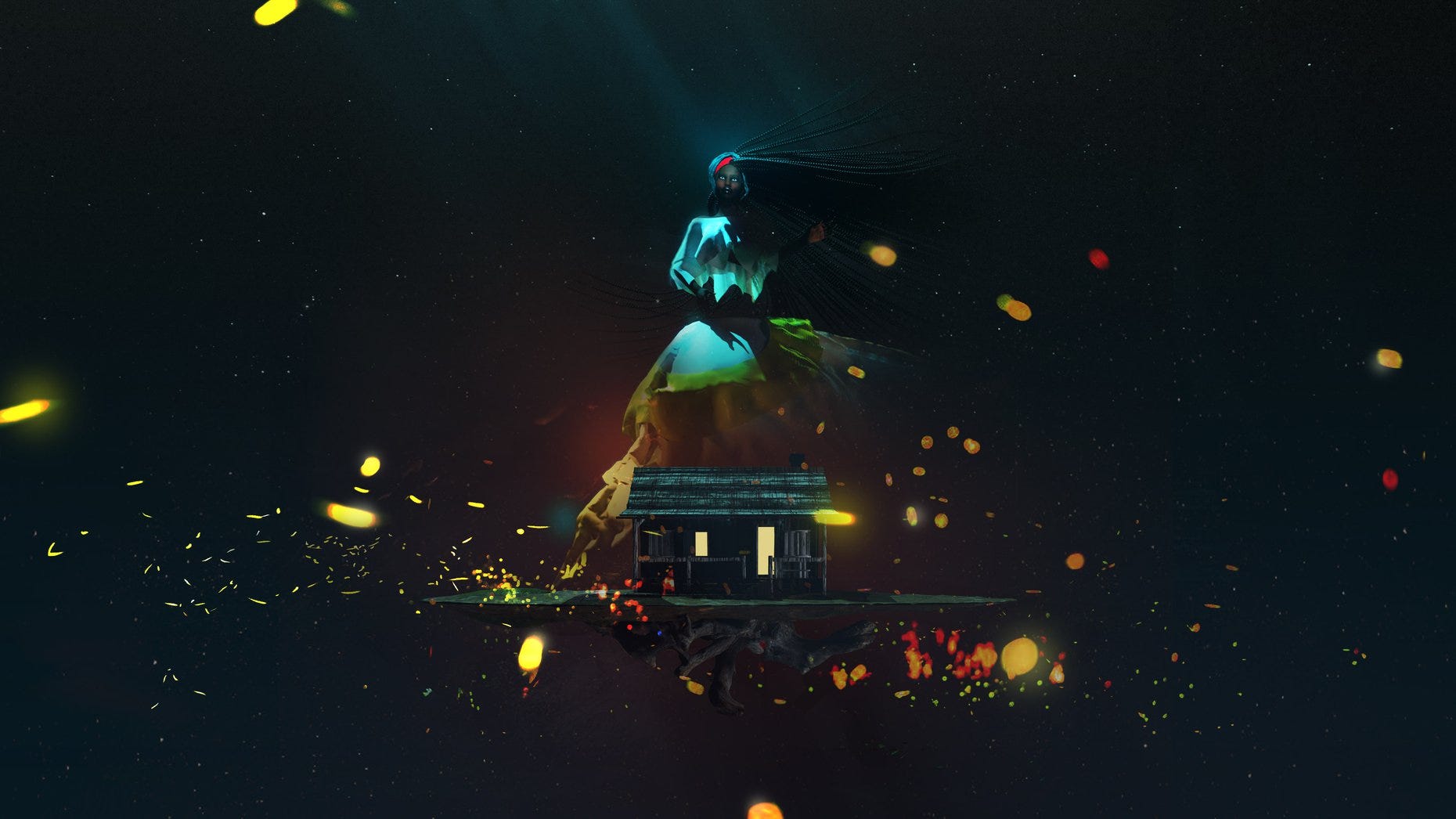

No Proscenium’s Noah Nelson and Kathryn Yu are covering the 2021 Sundance Film Festival’s New Frontier for us. This festival diary will update through the event with notes, thoughts, and capsule reviews through the end of the fest.
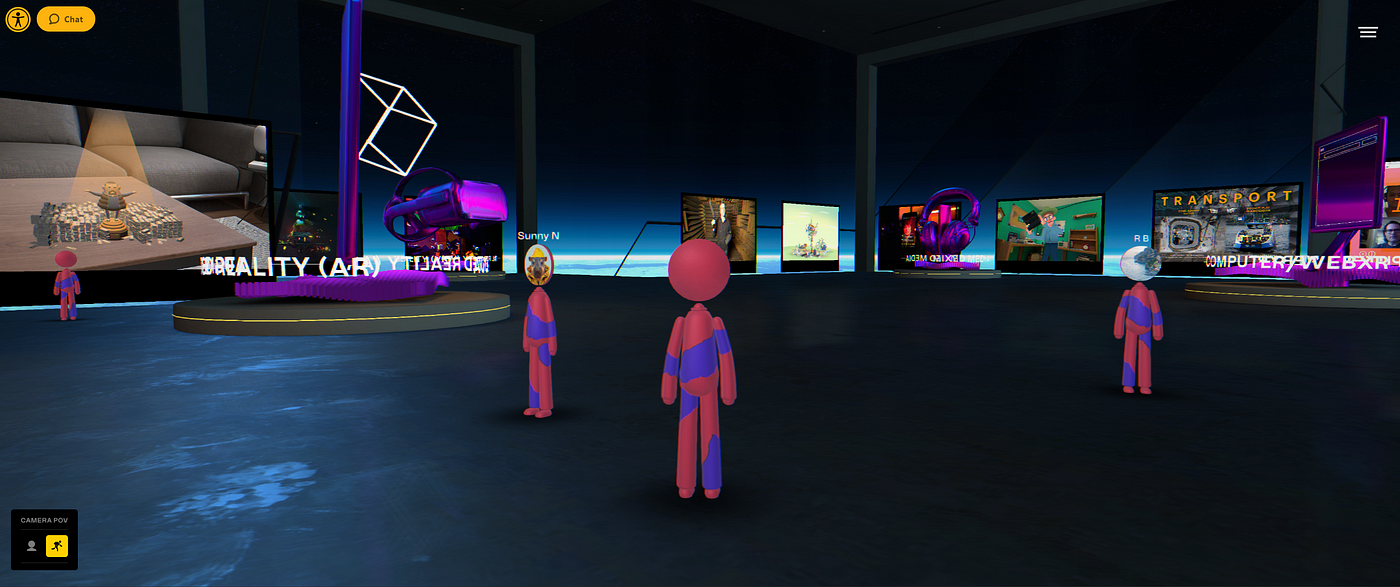
How to Get Into the New Frontier on your VR Headset: Because a friend asked last night, I’ll reiterate this here.
After you’ve gotten your handy Explorer Pass, go to http://newfrontier.sundance.org on your desktop/laptop. Log in to your Sundance account and then configure your avatar. Look for the VR code on the right (it’ll be a string of random-looking letters and numbers). Now, go get your headset. Open a browser window in VR to that same URL; you’ll be prompted to enter in the alphanumeric code that you were shown before. Presto! You’re in.
Just bear in mind that the New Frontier Gallery space is where you’ll find links to each of the 14 projects (they’re organized spatially by format) but you won’t actually be viewing the projects within the Gallery. Many of them have their own separate builds/apps or are best accessed via mobile or desktop web browser. — Kathryn Yu
February 4, 2021
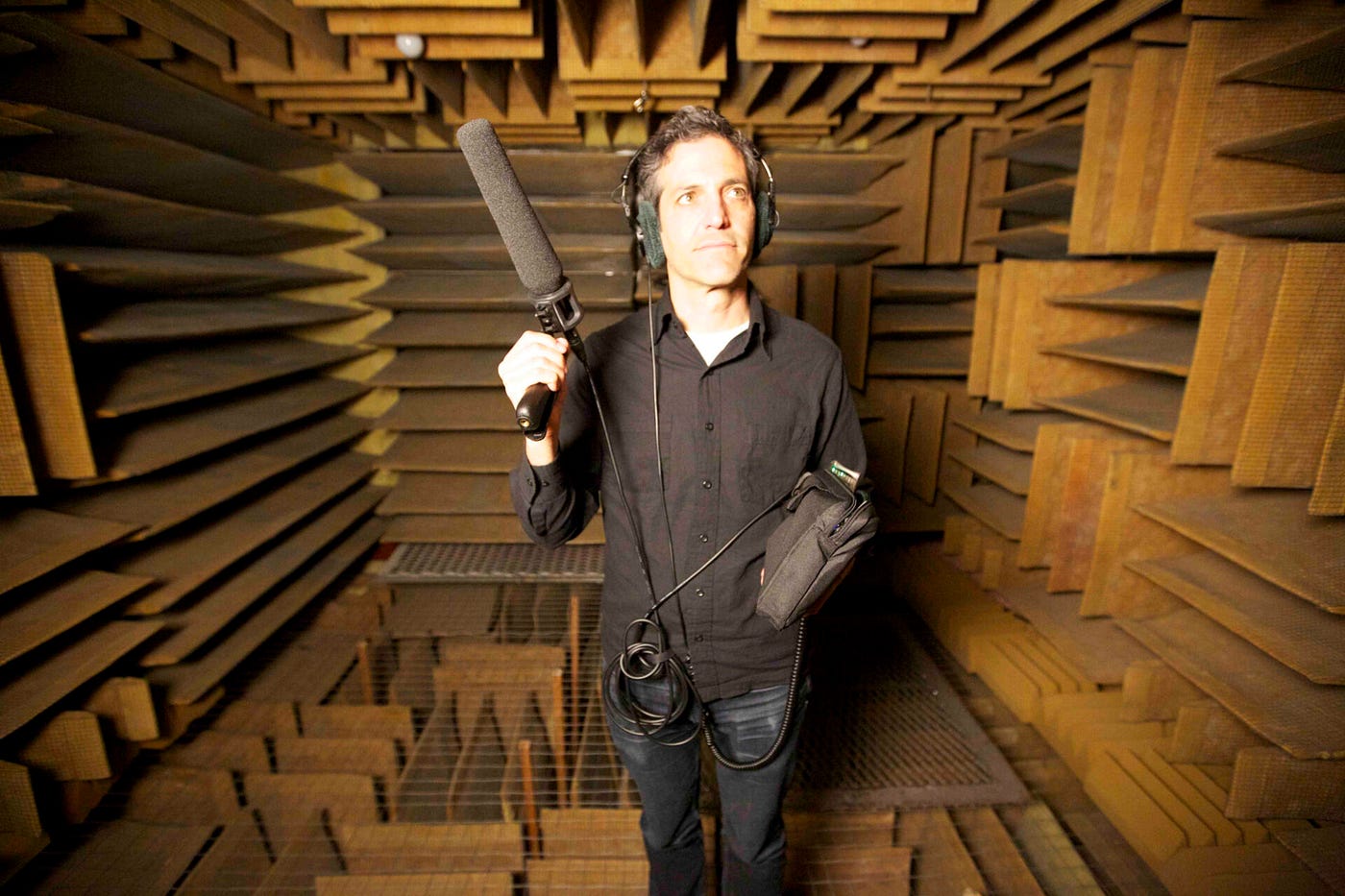
7 Sounds: I didn’t really have any expectations for this piece, so, unlike Noah, I wasn’t as disappointed with what I got. After watching the intro on YouTube, the audience is instructed to go into their beds and keep listening from there. The screen turns black. And our two hosts take us through a series of an interesting but ultimately disconnected series of sounds: an extinct bird, the human breath, a library of orgasms, and a protest in Spain marching through a tunnel, among others. Imagine an episode of the podcasts 20k Hz or 99% Invisible, and you’ll get the general vibe.
To me, just closing my eyes and listening to someone talk about something they’re really passionate about was a pleasant enough diversion, but in the end, there’s nothing tying all of the sounds together thematically so it all feels like an opportunity wasted. — Kathryn Yu
Rich Kids: Performed live on YouTube and Instagram, Rich Kids: A History of Shopping Malls in Tehran deserves all of the accolades its received. It is a powerful transmedia piece mixing both recorded and live elements that manages to be much, much more than the sum of its parts, doing things that I didn’t even know were possible on Instagram Live. I felt like a digital archaeologist traveling back in time, our flux capacitors powered by the absolutely hypnotic performances of Javaad Alipoor and Peyvand Sadeghian, the two narrators of the piece.
You might not know which screen to look at at any given point during Rich Kids but this much is clear: it’s impossible to look away. — Kathryn Yu
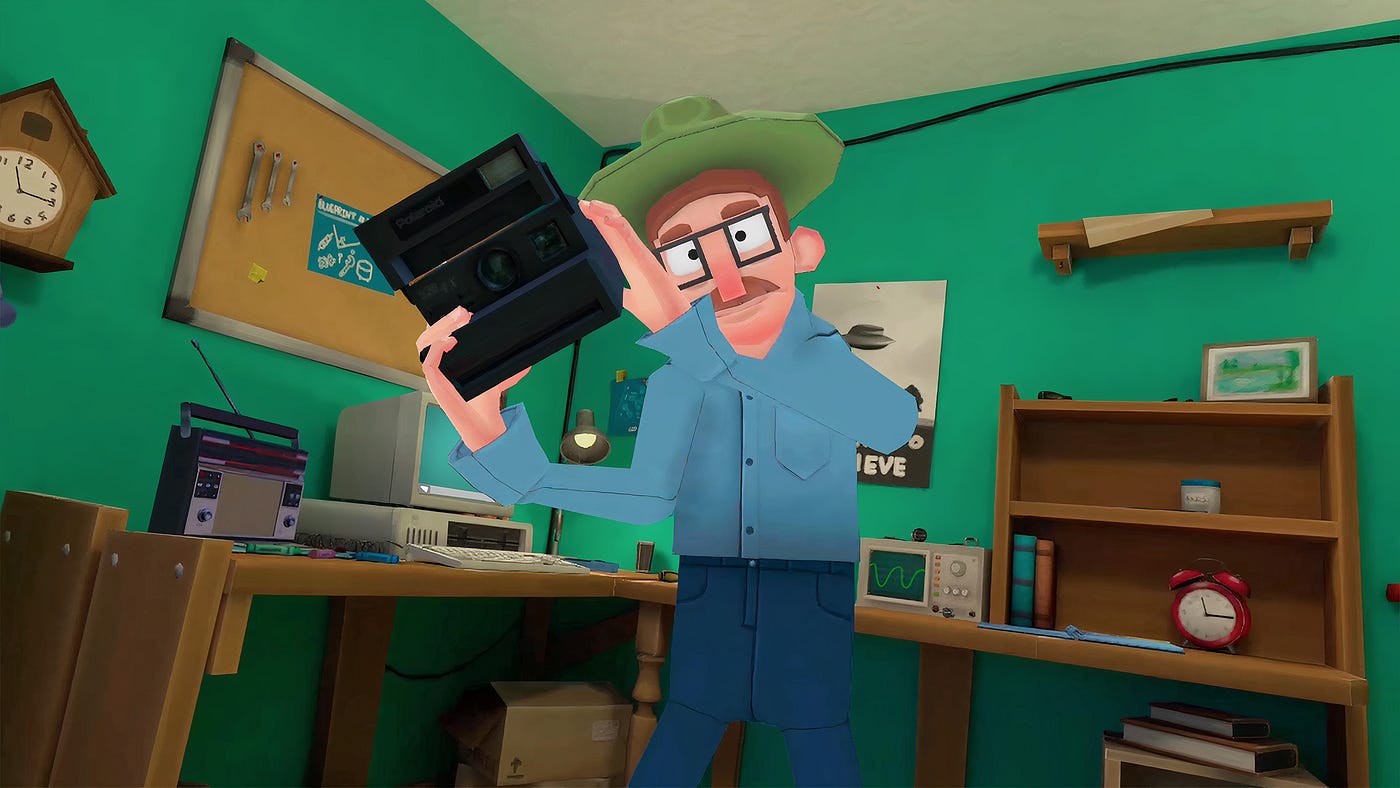
Tinker: The structure and premise of this immersive theatre piece-in-VR holds a lot of potential: a single participant interacts with an actor in a series of vignettes as a crowd of disembodied invisible onlookers observe. The participant roleplays as the grandchild, who grows ever older and taller as the story progresses; both the actor and participant converse with one another to push the narrative forward towards the inevitably of grandpa’s memories failing.
It was a bit awkward to be a body-less voyeur, here, I must confess. On occasion, the actor would turn and walk right through me; he also would have issues overlapping his avatar with the furniture or the door, like his arm disappearing into his head once in a while, pulling me out of my suspension of disbelief.
I also found the stylistic choices of Tinker to be incongruent with one another. The experience renders the participant as two transparent sci-fi-looking blobs (no arms, no legs) with floating hands. This is in stark contrast to the cartoonish look of the grandfather character and rest of the environment. These visual styles felt especially in conflict when we’re whisked into the dark recesses of a memory, and they’re the only two things to look at while we’re spending time in a black void listening to recorded dialog.
Sadly, I didn’t connect with the main “Randy” character, nor did I find the actor to have an interesting rapport with our participant during the session. The two went through a series of exercises that mimic the sort of thing a grandparent might do with their beloved grandchild who they don’t get to see very often. But the slow pacing, general awkwardness, and low energy of the room meant that these interactions probably came off as more rote than intended. I’m not sure our participant was that really into LARPing as a grandchild during the story. So I soon found my attention wandering multiple times during the piece.
Despite being in the experience for a good 45–60 minutes due to technical issues, the ending of Tinker also feels abrupt and mildly unsatisfying as there simply isn’t much dramatic tension or conflict to hold onto from a spectator’s standpoint. Perhaps I’d have felt differently if I was the participant, but perhaps not. — Kathryn Yu
February 1, 2021
7 Sounds: On paper, this should be my favorite thing in the mix. I’ve always dug Sam Green’s documentary work — his feature The Weather Underground remains a favorite, and I’ve been lucky enough to catch one his live cinema shorts — and audio, well audio is still my jam after the better part of three decades of working in radio. But 7 Sounds was a major disappointment to me. Indeed, it was deeply frustrating to have gifted filmmaker swing and miss so totally: deploying spatial audio as if it were an oddity and dancing around the possibility of audience centered design by noting in the written and spoken text of the work that he doesn’t like audience participation. That seems obvious enough from the work itself, which seems interested in the novelty of binaural sound, but unaware of the decades worth of potent work that have been created with it. In other words: if you thought this was special, oh, do I have some surprises for you. — Noah Nelson
Prison X: Chapter 1: The Devil and the Sun: Kathryn’s review noted that she had motion sickness issues, but I’m lucky in that is rarely a problem for me. It’s also a shame for her, because this piece set inside a Bolivian prison reminds me of so many immersive theatre pieces I’ve seen, only with the enhanced ability to play with perspective in ways that are physically impossible. There are, without a doubt, some rough edges to the build, and the onboarding could be smoothed out and then some but the bones. Oh the bones here are so exciting. The whole piece looks to have been built using the Quill tool (or something like it) and that aesthetic coupled with the site-adaptive staging logic of immersive theatre really hits all of my buttons. This one has earned a breakout review before things are through. — Noah Nelson
January 31, 2021
4 Feet High: In this film, Juana (played by Marisol Agostina Irigoyen), a 17-year-old wheelchair user has just started a new school and quickly befriends some activitists who are attempting to get the school to provide them with sex education classes, which are mandated by the government, but not currently available to the students. This sets her off on a journey to explore her own sexuality as well.
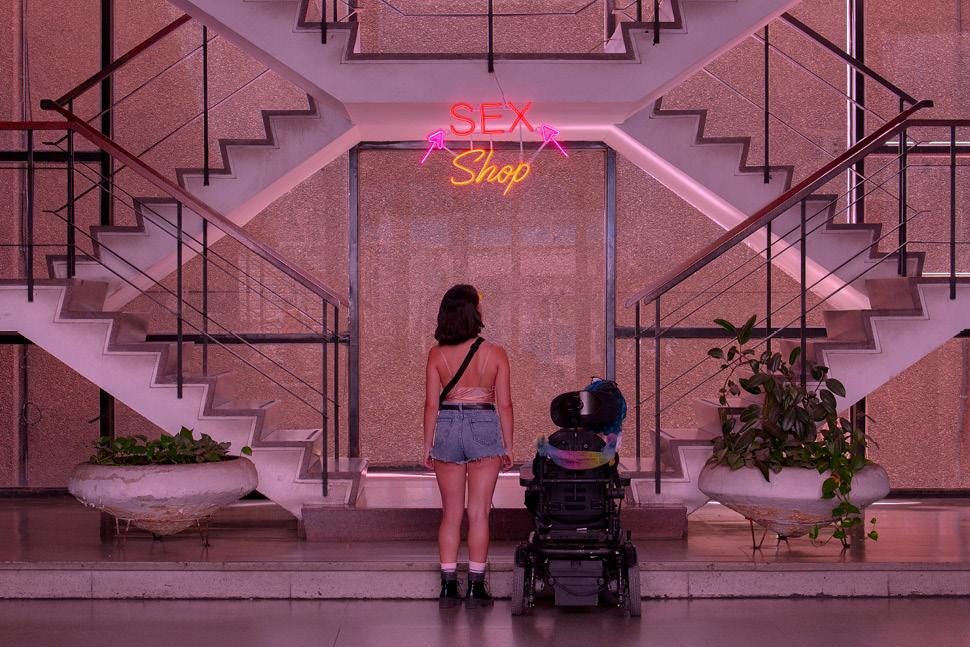
Because the story is told over four separate but related 360-degree films about Juanita’s life, the pacing also felt just right to this fatigued writer, and I appreciated the unique perspective of placing the camera (and thus the viewer) at eye-level with Juana during the entire story. We literally see what she sees, in VR, and it’s pretty powerful. The characters all speak Spanish but there’s great care in displaying both stylized illustration and subtitles on the screen during the film; the accompanying text and animated drawings all feel like something Juana would doodle in her notebook.
And bravo to the creators for casting an actor who uses a wheelchair to play a character who uses a wheelchair; I expect we’ll see much more of Irigoyen in the future.
Namoo: Like Noah, while I enjoyed Namoo, I had nagging questions in the back of my head about why the studio chose the medium of VR for this piece. The viewer is at a much larger scale than the main characters who mainly interact silently in a circle in front of the audience, slightly removed. Their backdrop is essentially a dome: a formless-feeling void behind them. It’s a very pretty void for the most part, but I was really missing a sense of time, a sense of place, and a sense of who specifically I was watching and why. I’ve come to expect high quality animation from Baobab Studios and this piece is no exception; however, given past work like Bonfire, Crow: The Legend, and Baba Yaga, the main character in this piece feels more like an abstraction or vessel for an idea than a living being. I think I may prefer their last work, Baba Yaga, instead.
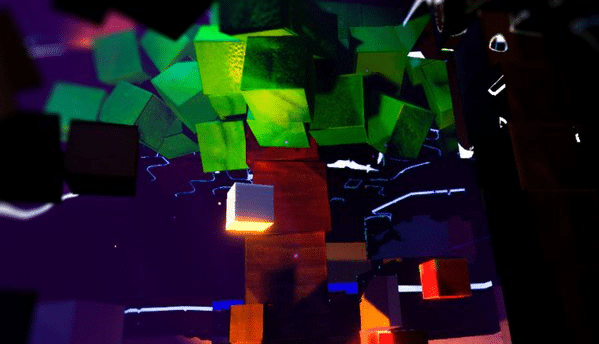
To Miss the Ending: I’m dead. Or at least, I think I am? To Miss the Ending kicks off the experience by asking for your first and last name as well as your birthdate (it should be noted that there is a clear link to their privacy policy and the participant can also opt out of sharing this information with others). It then “uploads” the viewer into an imagined future digital afterlife where disembodied voices describe what kind of future is in store for us. These voices mention memories of their lives in the future: getting made redundant over and over, the loss of natural elements like trees or bees, or digital billboards which are so brightly lit that nobody wants to live by them. They also mention glitches in the afterlife system and not necessarily knowing what they were consenting to when they were “uploaded.” An abstract cityscape made up entirely of cubes comes to life all around you as people describe places that they used to go or used to work.
While I admire the exploration of what a digital afterlife would look like as well as some of the inherent downsides of being alive, well, forever, To Miss the Ending makes its point pretty quickly and then reiterates it several times making it twice as long as it needs to be. Given that all the visuals are composed of cubes (we see objects that are implied to be buildings, cars, streetlights, and more) but hear multiple people talking (sometimes at once), the narrative can feel disconnected from the visuals. Personally, I was trying to keep track of each individual speaking but it was difficult to discern who was who given the lack of specific names, places, or occupations.
I am left wondering what would happen if instead we followed one or two specific characters’ journeys into this virtual space and their eventual disillusionment with being kept virtually alive instead.
January 30, 2021
Rich Kids: A History of Shopping Malls in Tehran: Full review now available. — Noah Nelson
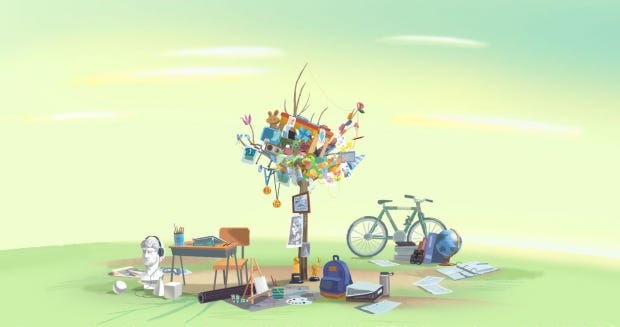
Namoo: The latest from Baobab is a good reminder that VR is a compelling medium for animation. This piece departs from the more recent pieces from the studio that call upon the viewer to be a participant in the story. While I prefer that kind of experience, I’m still enough of an animation fan to enjoy works like this. Namoo mixes a little “Seven Ages of Man” with Pixar’s Up, and a lovely aesthetic that leans on the dreamier aspects of the Quill toolset without giving itself over fully to abstraction. I can understand why there was no affordances for audience agency here, but I have to admit that having some control over the pacing — if for no other reason than to have more time to examine the details of the intricate composed scenes — would have been good. However, this will play well on flat screens, and that may be the reasoning here. Maybe an “at your own pace” version could be added as a bonus feature on a second viewing, if it made sense from a production resources standpoint. — Noah Nelson
Get No Proscenium’s stories in your inbox
Join Medium for free to get updates from this writer.
SubscribeSubscribe
Fortune! — The National Film Board of Canada always brings fun projects to the dance that tell real life stories in new ways thanks to current technology. That’s the case here with Fortune!, which uses animation and augmented reality to tell the story of counterfeiter Frank Bourassa. It’s a neat story, although much like Kathryn notes in her review below, I’m not sure why this is in AR. Everything clips along at the pace of the audio track, so even the most interesting environments are gone in a flash. At one point I even missed a neat moment because I didn’t have enough time to change my physical perspective. As with Namoo, I’m finding myself wanting the ability to control time here, even if it as a bonus feature after the artists give us their version of things. Then again, I am a comic book nerd, so controlling the cadence of a visually grounded story is something that is second nature to me. — Noah Nelson
January 29, 2021, Part Two
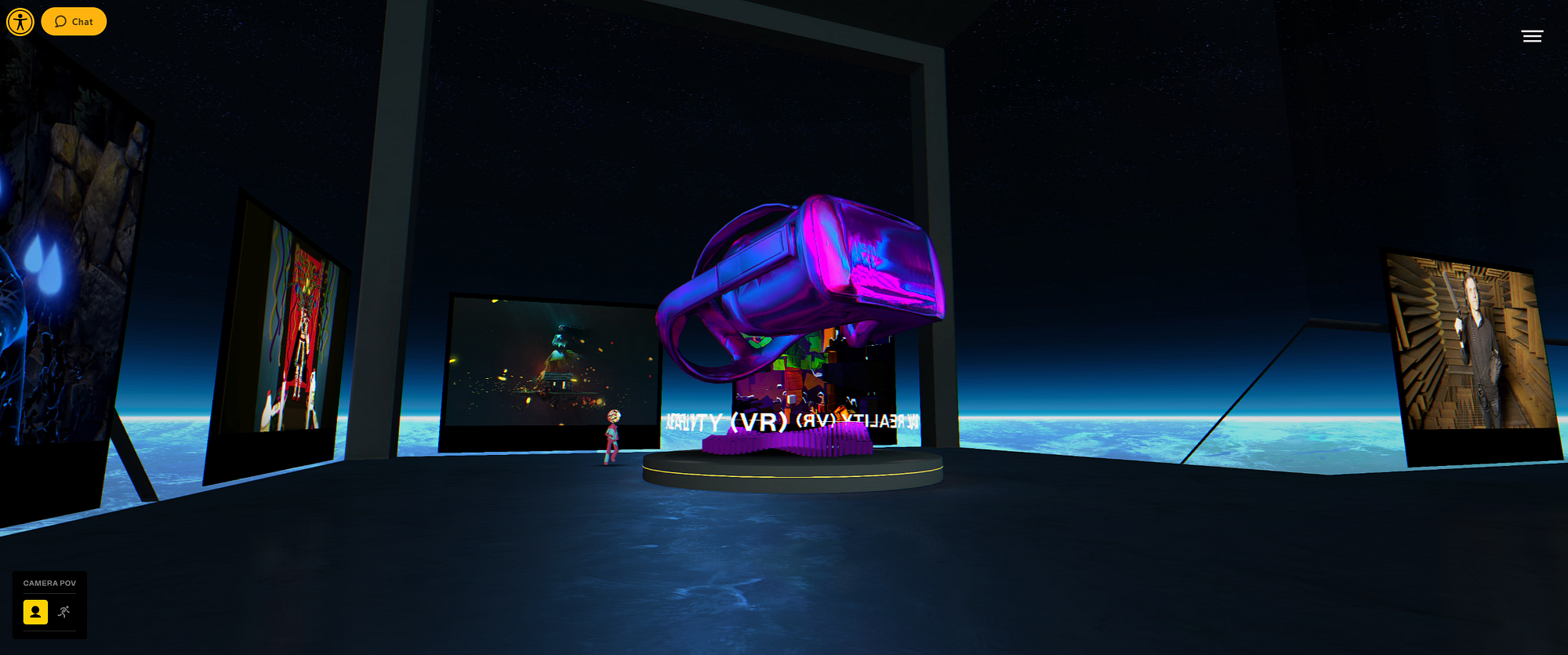
New Frontier First Impression: I think I’m finally getting the hang of this?
For anybody reading this who might be remotely interested in attending, Explorer Passes are still only $25 and still on sale. The Explorer Pass gets you into all the New Frontier projects. That is to say: the New Frontier experiences are not sold out as of the minute I write this. And as far as I can tell the vast majority of the 14 projects have large or nearly infinite capacity, with Tinker being the big exception. For 7 Sounds and Rich Kids, both are livestreamed experiences that don’t appear to have an attendance cap and Beyond the Breakdown still had many time slots available the last time I checked. The 10 other projects in New Frontier you can essentially do on-demand while the festival is still running.
New Frontier (and the rest of Sundance) runs through next Wednesday so you still have time to try a bunch of cool, interesting, experimental stuff!
— Kathryn Yu
Prison X: Chapter 1: The Devil and the Sun: I’m intrigued enough by the premise of this documentary-inspired look at the Bolivian prison system that I might go back and give it another go. The audience plays the role of Inti, a man who was caught smuggling cocaine and now must serve eight years in prison. All the characters you encounter in this VR prison exist in a fascinating dream-like world, designed as a mashup of Andean mythology and modern reality. The feeling of being unmoored in Prison X is bolstered by a hand-drawn art style layered on top of mocap and photogrammetry.
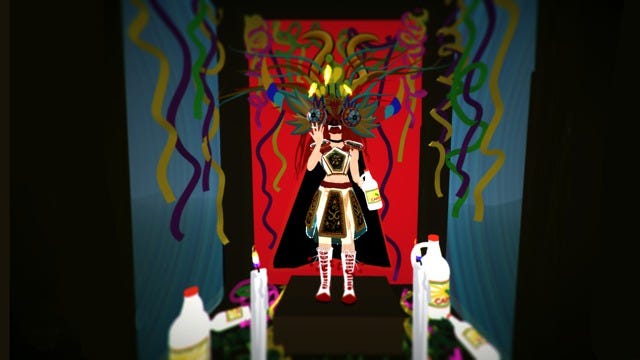
Sadly, this project made me feel motion sick. Prison X only offers smooth locomotion (that is, the kind using the joystick to move around continuously) within their experience. I became nauseated about 15 minutes into the project given the amount of movement I was being asked to do as the main character. Additionally, it seems like it’s best to have a fair amount of space to walk around in as there was one scene where the participant is asked to pick things up off the floor. The viewer experience can also be a bit choppy depending on your hardware, with my headset forcing me to wait multiple times as it loaded up the next scene, breaking up the story’s continuity (I was using a Quest tethered to a PC.).
I imagine that if you don’t get sick due to smooth locomotion and are using a more powerful headset, you’d have a much better experience than I did.
— Kathryn Yu
Traveling the Interstitium with Octavia Butler: The work of the visionary science-fiction novelist frames this set of four cutting edge new media pieces, available through navigating a pulsing web page full of space static…if you know where to click. Each portal — if you can find them — spins off into an alternate universe in a new browser tab where you may be flying around an colorful island filled with expressions of Black joy or watching a striking short film about Pluto accompanied by spoken word discussing memory and the universe, or a floating around a galaxy of user-submitted videos in capsule form where you can also record and add one of your own. Intriguing as they may be individually, as a set it’s hard to uncover any obvious thematic connections, other than placing them all within the liminal space between realities. — Kathryn Yu
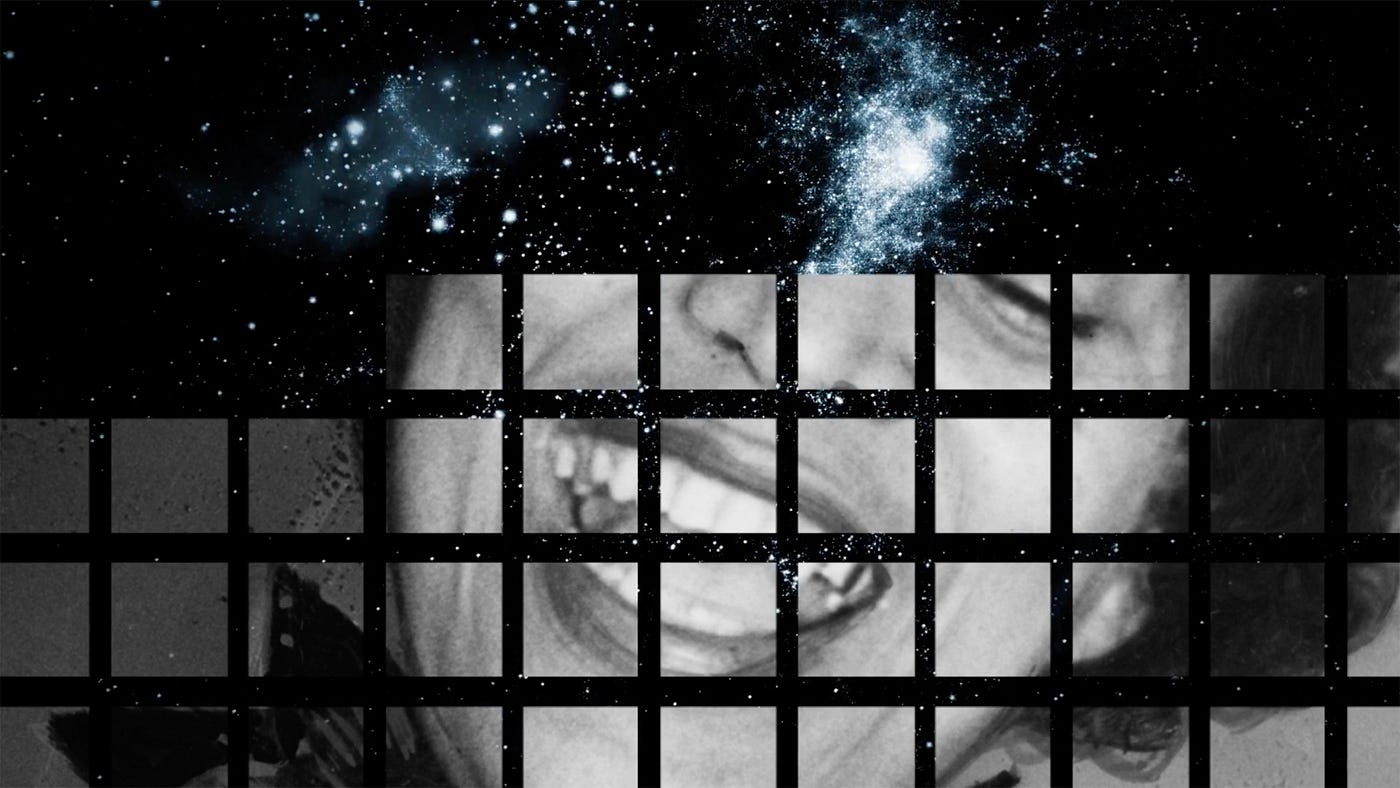
January 29, 2021
Beyond the Breakdown: This 45-minute speculative futures exercise is essentially a brainstorming session with strangers that takes place inside a web browser; think a Zoom meeting, but facilitated by an AI named Serenity who provides predetermined prompts, and some meditation time built in. We’re each asked to imagine the year 2050 and the kinds of messages and ideas we would want to bring into the future with us. It’s an interesting exercise to be thrown into a video conference with a bunch of strangers and asked to reflect upon the lessons of the pandemic and how those might be actualized in a utopian future. Unfortunately, because the “host” was essentially a bot, it frequently interrupted the conversation while one of the participants was speaking; I also had some technical issues with my laptop’s microphone (they recommend you use Chrome, I later realized). The output of the conversation was somewhat interesting but I don’t see it having a lasting impact on me. The parameters of the discussion are left purposefully wide open, which can make the conversation feel rather abstract.
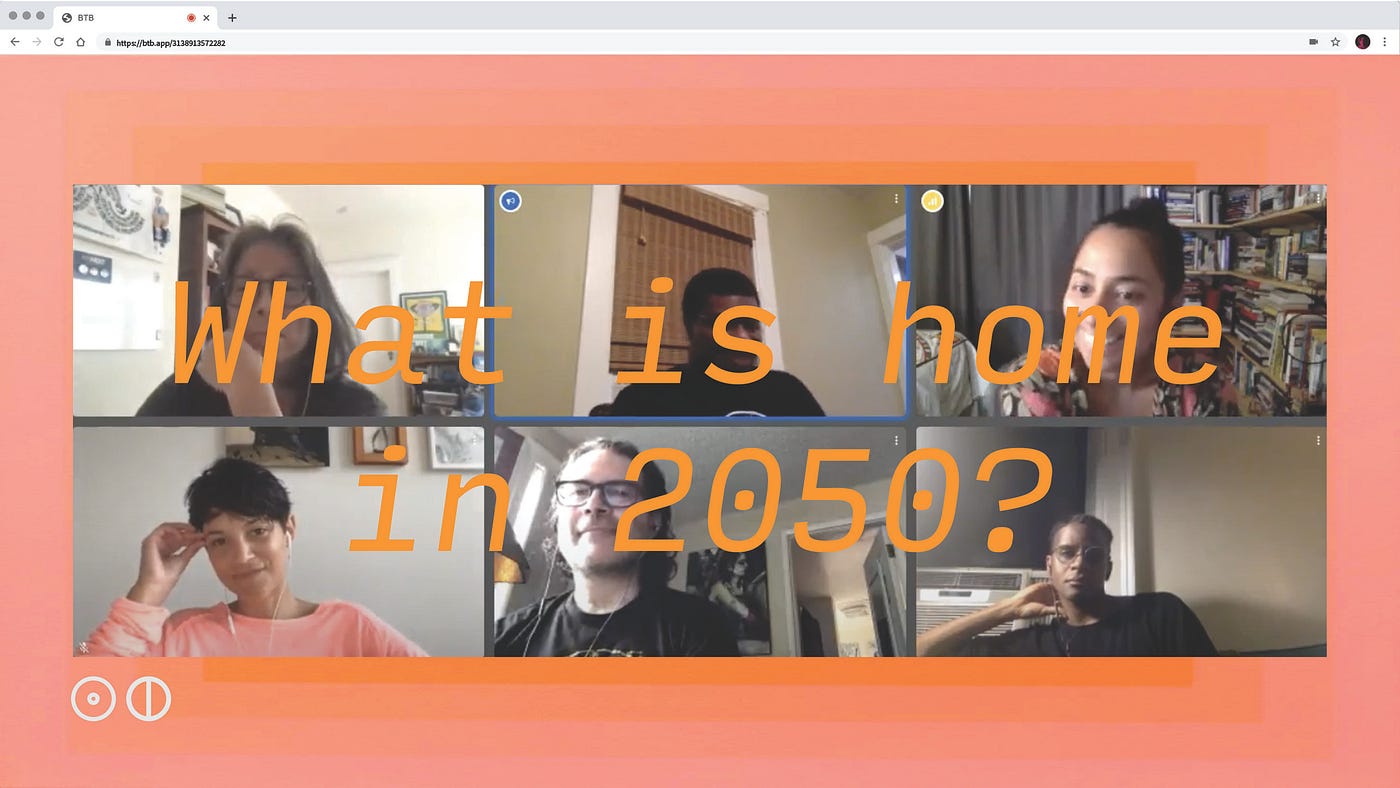
More importantly, I did find significant privacy issues with Beyond the Breakdown. The requirement that the participants must all be unmuted and have their webcams on isn’t spelled out explicitly in the registration process nor it is explained on the festival’s official web site or within the New Frontier’s virtual gallery space. While I engaged in the conversation with two strangers as best I could, I felt self conscious about my appearance (including my rather messy background) and caught off-guard.
The post-experience communication also suffers from similar privacy issues. During the registration process, I had entered my full name as well as my personal email address, assuming they were needed for ticketing confirmation purposes. So it was an unpleasant surprise to receive an email from the creators shortly after the session was over which exposed all of our full names to one another as well as our email addresses. Additionally, the email was sent to all the people who had registered for our particular session, even though half of them didn’t actually show up. At a time when issues of consent and the privacy and security of user data are so important, this seems like a massive oversight. — Kathryn Yu
The Changing Same: Episode 1: Time travel and magic realism combine to take viewers on a journey into one man’s experience as the victim of systemic racism and oppression in the modern United States, complete with flashbacks to the era of slavery. We as the silent voyeurs get whisked back and forth through a portal through space and time, observing vignettes which are portrayed in strange environments populated with volumetrically captured humans and skies that occasionally crack and shatter. (I’m guessing fans of HBO’s Lovecraft Country will feel at home right away.)
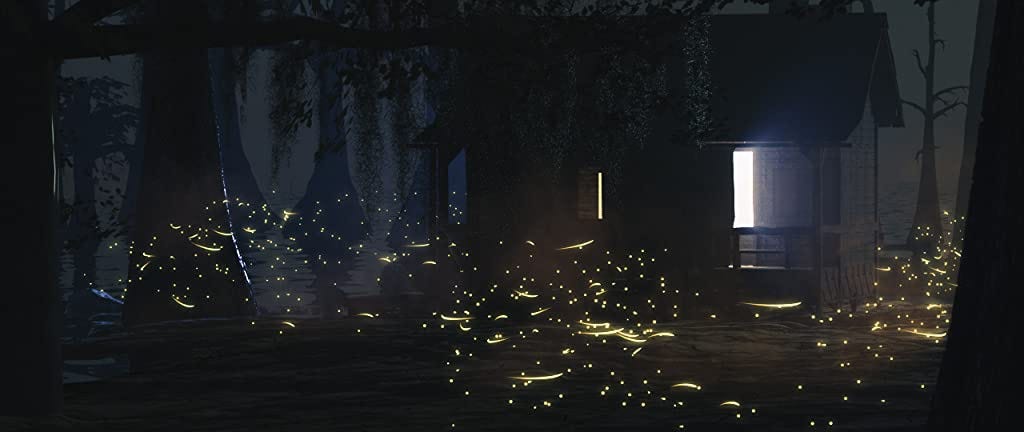
Unfortunately, the short experience ends just as it’s getting started. As soon as I found myself getting emotionally invested in the characters, the end credits began to roll. The actors make eye contact and occasionally address the audience directly, but I’m also unsure of the role I play in the experience as I don’t seem to have any actions I can take. I also find myself distracted by the uncanny valley-ish look of the characters, whose faces seem to be projected to the exterior of an elongated sphere (without any protruding features) acting as their heads.
The Changing Same has a lot of potential and I’m eager to see what they do next, as this tiny taste of the experience isn’t nearly satisfying enough. — Kathryn Yu
Fortune!: Imagine a segment from This American Life, if you will, but animated on your kitchen table, and you’ll get the vibe of this mobile AR story. The heart of the experience is hearing what is purported to be a real life true crime story from Frank Bourassa: a Canadian who counterfeited $250 million in fake $20 bills. He tells his tale as animated dioramas illustrating the action come to life on the nearest available flat surface; the viewer can move their Android or iPhone device around to examine the tiny sets in further detail.
The voiceover aspect is compelling and Bourassa and team clearly know how to spin a good yarn but the audio component is so interesting that I actually found myself distracted by the novelties of the visuals. The AR ends up feeling like a neat technical trick but not necessarily one that improves upon the story. At the end, I wondered why this had to be in augmented reality in the first place, when it makes for a pretty dang good podcast or audiobook segment on its own. — Kathryn Yu
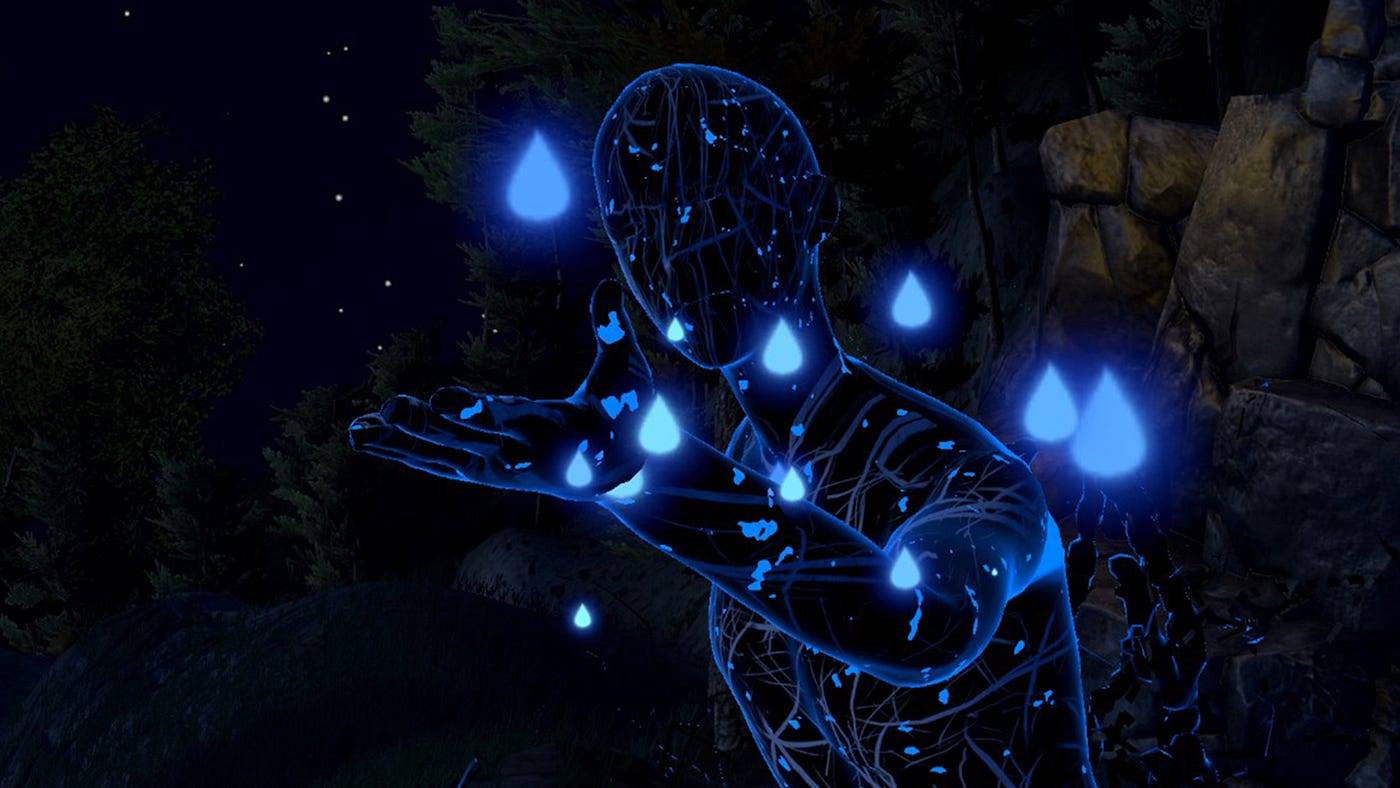
Nightsss: Nature, dance, and poetry combine in this sensory version of Weronika Lewandowska’s spoken word poem, Nightsss. Performed entirely in Polish, it’s best to lean back and not think about the content of the audio, but, rather, the pleasures of repetition (sibilance, any one?) as the forest morphs and changes around you and a floating dancer hovers behind you.
While the official description mentions ASMR (“rhythmic ASMR sonic structure”), I didn’t feel any brain tingles with this one, although that doesn’t make it less enjoyable. — Kathryn Yu
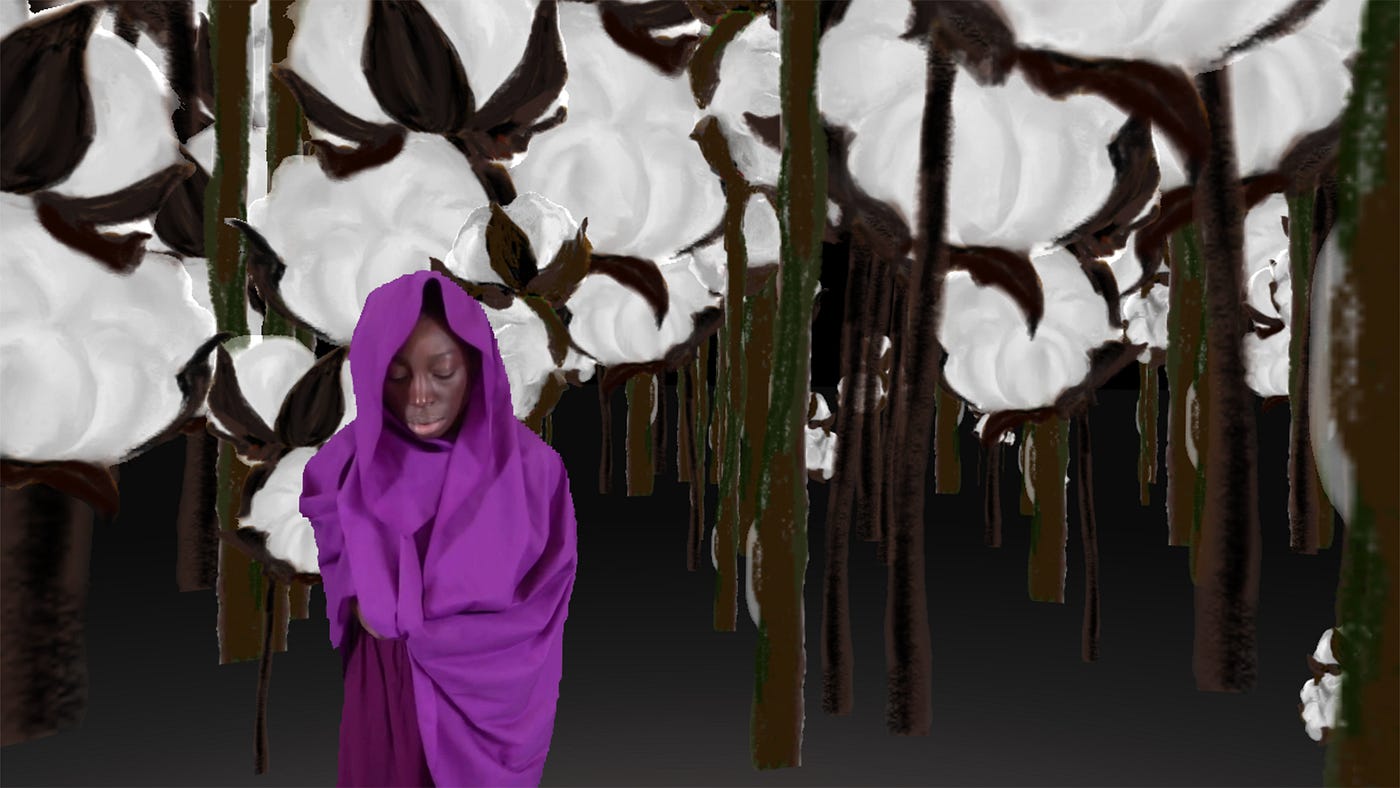
Secret Garden: Several voices are speaking around me at the same time. A calming ambient soundscape plays in the background. The voices fade in and out as a field of flowers sways in front of me, populated by surreal-looking yellow and blue roses as well as yellow and purple pansies. They pivot and move out of my way as I navigate forward through the space. Cotton plants, their stalks as thick as tree trucks, dance overhead, set against a dark starry sky. I wander through the garden until I suddenly come across a figure of a Black woman, captured in video, bright and crisp in stark contrast to the like plants around me. Her voice suddenly starts playing through my headphones, recounting a memory. She’s talking about 9/11. I keep walking and stumble upon additional stores: ones about planting black-eyed peas and yams, or the way that Grandma kept her house, or where intelligence comes from from in the first place. And the narrators? They’re all Black women.
Wonderfully thought-provoking, artist Stephanie Dinkins’ Secret Garden is a tenderly crafted memory palace which reminds us of the stories that bind us together. — Kathryn Yu
January 28, 2021

Rich Kids: A History of Shopping Malls In Tehran: This play by The Javaad Alipoor company is spectacular. So much so that I’m working on a proper review. Practitioners of transmedia should take note: so much of what that field has chased manifests in the way that pre-recorded video, live video, and social media are woven together to make a singular story bound by time. Or to talk about this in film terms: I got notes of Adam Curtis’ documentaries, ‘James Burke’s Connections,’ and ‘F for Fake” from this piece of docu-theatre. Don’t miss it. — Noah Nelson
The Social Spaces/New Frontier Gallery (First Impression): While I’ve got some issues with the in-headset locomotion and the way in which opt-in conversation is working — which we’ll get to in a moment — I want to start with what I’m most impressed by: that it actually works. As in: one second you can be standing in the middle of the New Frontier Gallery via Oculus, and then with two taps you can pop into the Film Party space with what has so far been very little lag. (Maybe that’s changed as the post-preview crowds have swarmed in.)
The meta-navigation is great, and all of it is happening via WebXR. Which is impressive.
Getting into a conversation bubble can be a little awkward. Okay. A lot awkward. You’ll be popping around the space and WHAM, a permission window will appear right in front of you. In the first ten minutes I was in the space I found myself Matrix-ducking more than once, and waving people off as I lined up a photo in the Cinema House. When I did finally want to initiate a conversation, the window took its sweet time popping up. The idea of the “chat circles” is smart, but I’m thinking they’d be better implemented as architectural features — sunken lounges anyone? — than as something which can be summoned on demand.
I also wish that teleportation wasn’t the only locomotion available in headset. The current implementation isn’t all that precise and over/undershooting teleports in a social space is just awkward. I know a lot of people can’t handle controller based motion, and maybe it is worse, but I’m missing this here.
— Noah Nelson
Discover the latest immersive events, festivals, workshops, and more at our new site EVERYTHING IMMERSIVE, new home of NoPro’s show listings.
NoPro is a labor of love made possible by our generous Patreon backers. Join them today!
In addition to the No Proscenium web site, our podcast, and our newsletters, you can find NoPro on Twitter, Facebook, YouTube, Instagram, in the Facebook community Everything Immersive, and on our Slack forum.